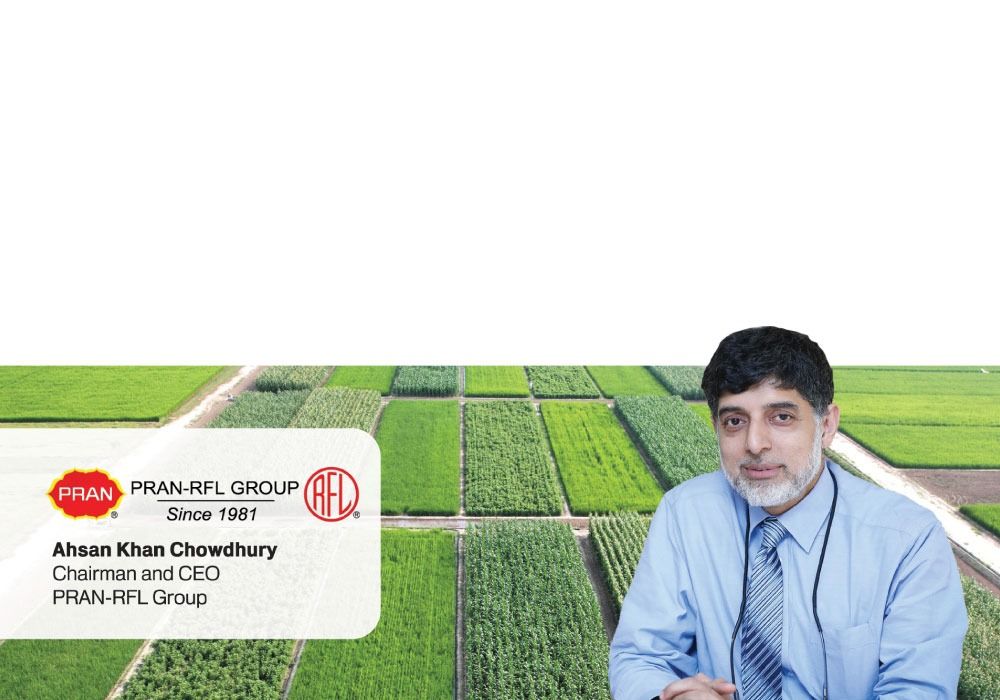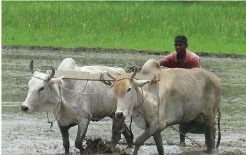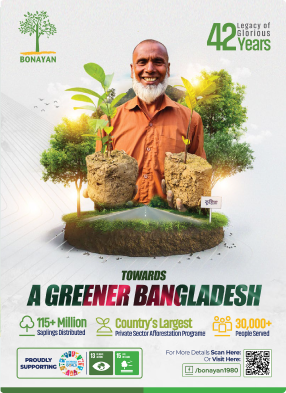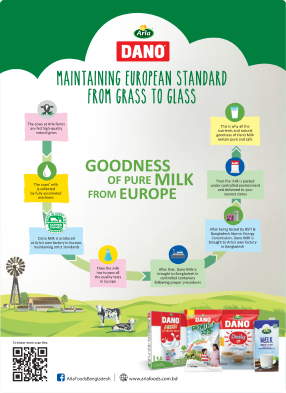- info@ficci.org.bd
- |
- +880248814801, +880248814802
- Contact Us
- |
- Become a Member
- |
- |
- |
- |
- |

Agriculture is the main driving force of the economy of Bangladesh and the main source of employment for the rural people. The role of this sector in the overall economy of the country, including employment generation, poverty allevia- tion, human resource development, and food security, is undeniable.
According to the data of the Bangladesh Bureau of Statistics (2024), the agriculture sector contributes 11.38 percent to the GDP. The Labor Force Survey (2022) indicates that approximately 45.4 percent of the employed population in the country is engaged in agricultural activities. The agricultural sector is continuously working to meet the food needs of the large population of the country.
In the future, the rapidly growing population will require much more food. However, due to various challenges, including climate change, the country's agriculture sector is under pressure. These challenges pose major hindrances to agricultural production. Therefore, it is imperative to establish a sustainable agricultural system for the future.
Moreover, sustainable agriculture and climate resilience are critical focus areas for Bangladesh, as the country is highly vulnerable to the effects of climate change. It is already experiencing the impacts of rising temperatures, sea-level rise, and the increased frequency of natural disasters such as cyclones, floods, and droughts.
Characteristics of Bangladesh's agriculture
One of the key characteristics of Bangladesh's agriculture is the reliance on ancient farming methods. In this country, most farming is conducted in traditional ways. As a result, the yield per acre is low compared to other countries, despite the high productive capacity of the land.
Additionally, agriculture in Bangladesh is highly dependent on nature. Therefore, the success and failure of the country's agriculture depends on the whims of nature. For instance, regular and moderate rainfall results in good crop yields, whereas irregular or insufficient rainfall leads to reduced or damaged crops.
Another characteristic of Bangladesh's agriculture is the fragmentation of agricultural land into small plots. This fragmentation makes scientific farming techniques difficult to implement, contributing to lower agricultural productivity. Furthermore, subsistence farming is a dominant feature of agriculture in Bangladesh. Most farmers cultivate crops primarily to meet their family needs, leaving limited scope for commercial farming. As a result, agriculture on a commercial scale is less significant in the country.
Challenges Facing Bangladesh's Agricultural Sector
The agricultural sector in Bangladesh is currently grappling with numerous challenges. The main challenge is that the agricultural land in Bangladesh is decreasing day by day. According to the Year Book of Agricultural Statistics of Bangladesh (2022), the total cultivable land in the country is 88.29 lakh hectares.

Despite a growing population, agricultural land is shrinking due to various factors, including the construction of houses and roads. Approximately 80,000 hectares of land are converted to non-agricultural use each year, resulting in a loss of 1 percent of agricultural land annually.
However, the reduction in cultivable land is not the only challenge. Environmental and climate-related changes pose a significant threat to agriculture. Projections indicate that average nighttime temperatures could increase by about 4°C between 2075 and 2100. Paddy and wheat suffer more when the nighttime temperature rises.
Bangladesh is also experiencing changes in rainfall patterns. The annual average rainfall is increasing at a rate of 8.4 mm per year. While rainfall during the monsoon season is rising, winter rainfall is decreasing by 1.3 mm annually. This trend leads to excess rainfall during monsoons, causing prolonged floods, and inadequate rainfall in winter, increasing dependence on irrigation. Erratic rainfall exacerbates the risks of floods and droughts, which in turn disrupt agricultural cycles. According to a study by the Bangladesh Rice Research Institute, rice, wheat, and vegetable production in the northwestern region may decline by an average of 25 percent due to drought.

Another pressing challenge is sea-level rise in coastal areas. By 2100, the sea level in Bangladesh's coastal regions may rise by 0.54 to 0.86 meters, increasing soil salinity and significantly reducing the fertility of agricultural lands. This salinity poses a severe threat to crop production in these areas.
Mechanization is critical for the transition from subsistence farming to commercial agriculture, but it remains underuti- lized in Bangladesh. Many farmers are reluctant to adopt new technologies. Moreover, most of the farmers in Bangla- desh are poor. They cannot afford to invest adequately in the agricultural sector. Practical initiatives are needed to encourage farmers to embrace mechanization by making technology affordable and accessible.
Supply chain inefficiencies further cause various types of waste. Inadequate cold storage facilities, poor infrastructure, and improper post-harvest practices lead to substantial wastage of agricultural produce. Addressing these inefficien- cies is essential for reducing waste and improving the overall productivity and profitability of the sector.

How to overcome the challenges for sustainable agriculture:
To address the challenges facing the country's agriculture, a multifaceted approach is essential. Immediate and effective steps must be taken to ensure the country's agricultural sector remains resilient and productive. The following strategies can be considered:
1. Development of climate-tolerant varieties
Emphasis must be given on developing crop varieties that can withstand climate-related stresses, such as high temperatures, drought, salinity, and fluctuating night temperatures. Soil health can be improved through the use of organic fertilizers and other organic materials. The government should invest in research to develop and promote these varieties. Additionally, the establishment of seed banks would ensure farmers have timely access to high-quality seeds tailored to their specific needs.
2. Promotion of high-yielding and nutrient-rich crops
The yield per acre in Bangladesh is relatively low compared to other countries. To address this, hybrid and mutation breeding programs should be intensified, alongside an expansion of conventional breeding methods. These initiatives will help develop high-yielding and nutrient-rich crop varieties, enhancing both productivity and nutritional value.
3. Free flow of information
Platforms such as WhatsApp, websites, YouTube, and Facebook should be leveraged to provide farmers with essential information on weather, commodity prices, and modern farming techniques. Training programs on scientif- ic farming methods can be delivered through these platforms to ensure widespread reach. This approach will help farmers with the knowledge necessary for adopting modern agricultural practices.
4. Improvement of the agricultural marketing system
Farmers are deprived of fair price in many cases due to weak agricultural marketing systems. An effective agricul- tural marketing system is needed to make the agricultural marketing system more sustainable and people-friendly. By ensuring the real participation of all stakeholders, including farmers and consumers, fair price of the agricultural products will be ensured.
5. Expansion of agro-processing businesses
Along with the development of the agricultural sector, globalization, the development of information technology and the global open market economic changes have led to changes in the living standards and food habits of consumers. New avenues of social and economic development have opened up through the development of agro-process- ing businesses and the expansion of multi-faceted businesses in agricultural products.
6. Adoption of mechanization
Mechanization is critical for addressing labor shortages and reducing the reliance on manual farming methods. Mechanized agriculture saves time, labor, and resources while improving productivity and crop quality. To promote mechanization, farmers and entrepreneurs should have easy access to loans for purchasing agricultural machinery. Government, NGOs, and financial institutions should collaborate to provide these loans with minimal hassle.

7. Increased use of renewable energy
There is still power shortage in the country. When irrigation is needed on agricultural land, there is often no electricity. If we can provide irrigation through solar systems, it will improve the country's agriculture a lot. This can be done either through government support or through public-private partnerships.
8. Introduction of agroforestry
Integrating trees into agricultural lands through agroforestry provides both environmental and economic benefits. Tree roots help prevent soil erosion, while the shade reduces soil temperature and moisture loss. This practice can enhance land productivity and contribute to environmental conservation.
9. Promotion of cooperative farming
Cooperative farming can address the challenge of land fragmentation, a common issue in Bangladesh. By consolidating small plots into larger, it becomes feasible to implement modern technology. Cooperative farming can also facilitate resource sharing and improve overall agricultural efficiency.
10. Implementation of Good Agricultural Practices (GAP)
Adopting good agricultural practices is essential for accessing international markets and ensuring food safety. GAP compliance ensures the production of high-quality agricultural products while safeguarding the environment and public health.
Agriculture is the lifeline of Bangladesh's economy and plays a vital role in ensuring food security, economic stability, and rural livelihoods. Sustainable and climate-resilient agriculture is critical for the country's future. By integrating indigenous knowledge with modern technologies and leveraging government support, Bangladesh can develop a robust agricultural system capable of withstanding climate challenges.





